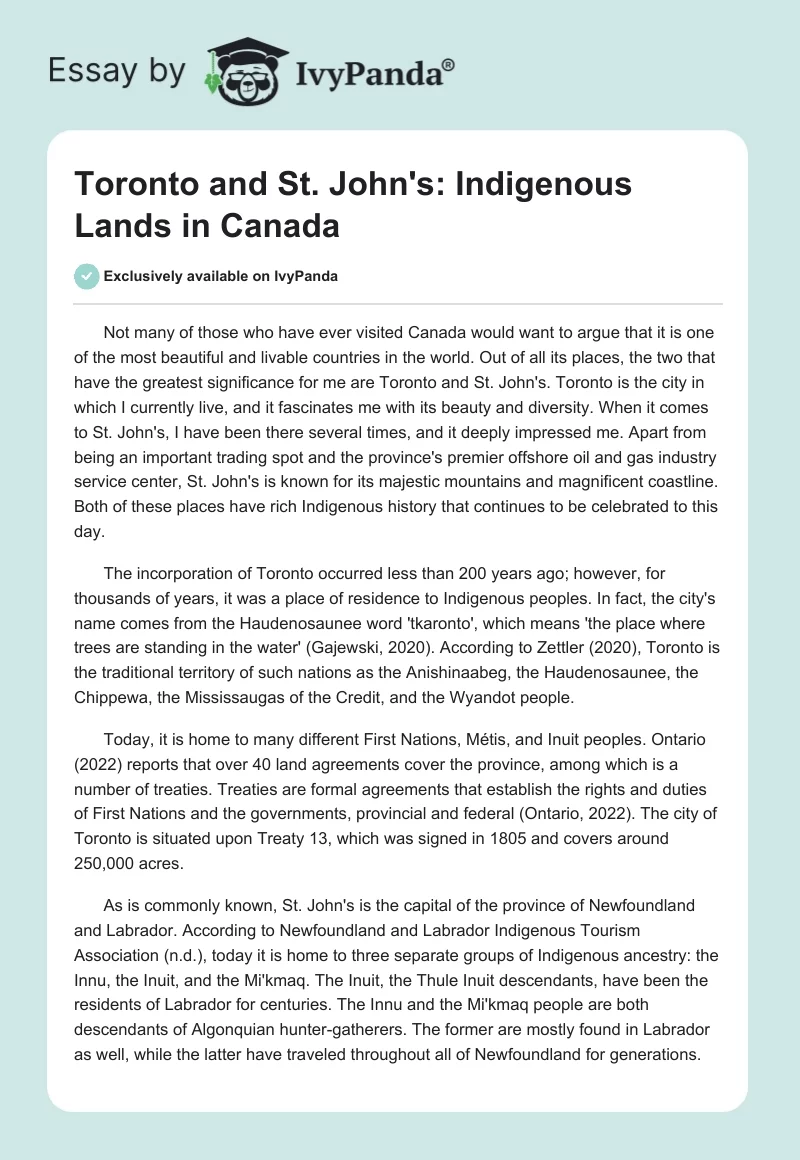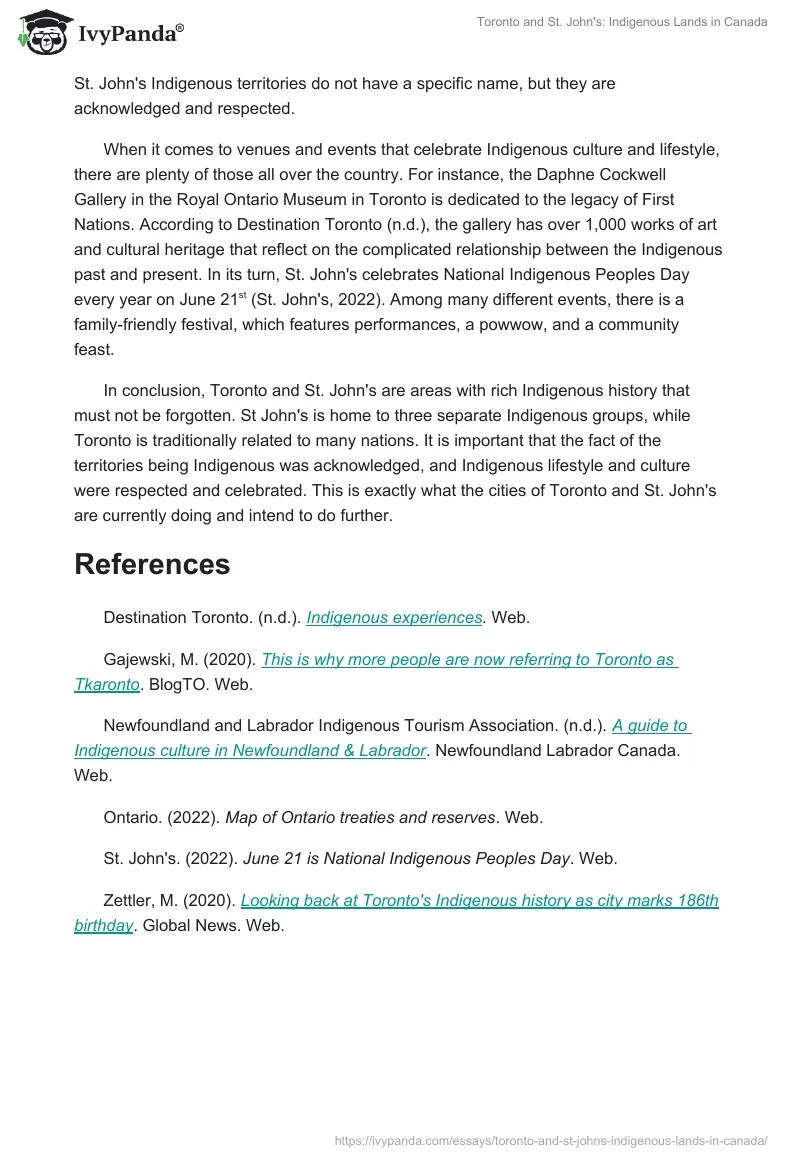Not many of those who have ever visited Canada would want to argue that it is one of the most beautiful and livable countries in the world. Out of all its places, the two that have the greatest significance for me are Toronto and St. John’s. Toronto is the city in which I currently live, and it fascinates me with its beauty and diversity. When it comes to St. John’s, I have been there several times, and it deeply impressed me. Apart from being an important trading spot and the province’s premier offshore oil and gas industry service center, St. John’s is known for its majestic mountains and magnificent coastline. Both of these places have rich Indigenous history that continues to be celebrated to this day.
The incorporation of Toronto occurred less than 200 years ago; however, for thousands of years, it was a place of residence to Indigenous peoples. In fact, the city’s name comes from the Haudenosaunee word ‘tkaronto’, which means ‘the place where trees are standing in the water’ (Gajewski, 2020). According to Zettler (2020), Toronto is the traditional territory of such nations as the Anishinaabeg, the Haudenosaunee, the Chippewa, the Mississaugas of the Credit, and the Wyandot people.
Today, it is home to many different First Nations, Métis, and Inuit peoples. Ontario (2022) reports that over 40 land agreements cover the province, among which is a number of treaties. Treaties are formal agreements that establish the rights and duties of First Nations and the governments, provincial and federal (Ontario, 2022). The city of Toronto is situated upon Treaty 13, which was signed in 1805 and covers around 250,000 acres.
As is commonly known, St. John’s is the capital of the province of Newfoundland and Labrador. According to Newfoundland and Labrador Indigenous Tourism Association (n.d.), today it is home to three separate groups of Indigenous ancestry: the Innu, the Inuit, and the Mi’kmaq. The Inuit, the Thule Inuit descendants, have been the residents of Labrador for centuries. The Innu and the Mi’kmaq people are both descendants of Algonquian hunter-gatherers. The former are mostly found in Labrador as well, while the latter have traveled throughout all of Newfoundland for generations. St. John’s Indigenous territories do not have a specific name, but they are acknowledged and respected.
When it comes to venues and events that celebrate Indigenous culture and lifestyle, there are plenty of those all over the country. For instance, the Daphne Cockwell Gallery in the Royal Ontario Museum in Toronto is dedicated to the legacy of First Nations. According to Destination Toronto (n.d.), the gallery has over 1,000 works of art and cultural heritage that reflect on the complicated relationship between the Indigenous past and present. In its turn, St. John’s celebrates National Indigenous Peoples Day every year on June 21st (St. John’s, 2022). Among many different events, there is a family-friendly festival, which features performances, a powwow, and a community feast.
In conclusion, Toronto and St. John’s are areas with rich Indigenous history that must not be forgotten. St John’s is home to three separate Indigenous groups, while Toronto is traditionally related to many nations. It is important that the fact of the territories being Indigenous was acknowledged, and Indigenous lifestyle and culture were respected and celebrated. This is exactly what the cities of Toronto and St. John’s are currently doing and intend to do further.
References
Destination Toronto. (n.d.). Indigenous experiences. Web.
Gajewski, M. (2020). This is why more people are now referring to Toronto as Tkaronto. BlogTO. Web.
Newfoundland and Labrador Indigenous Tourism Association. (n.d.). A guide to Indigenous culture in Newfoundland & Labrador. Newfoundland Labrador Canada. Web.
Ontario. (2022). Map of Ontario treaties and reserves. Web.
St. John’s. (2022). June 21 is National Indigenous Peoples Day. Web.
Zettler, M. (2020). Looking back at Toronto’s Indigenous history as city marks 186th birthday. Global News. Web.


